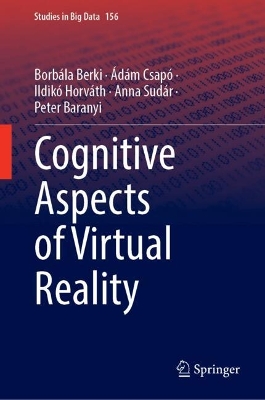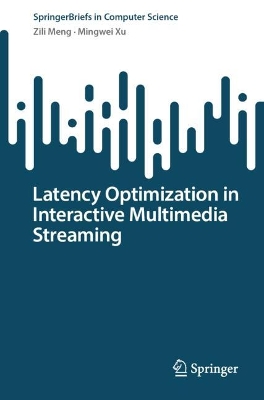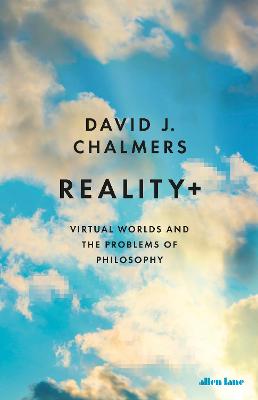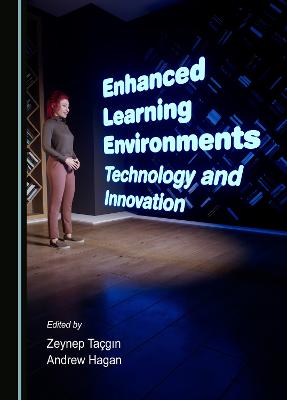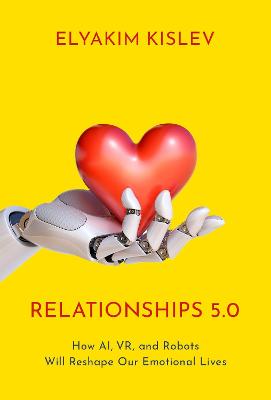Phenomenology of Virtual Technology
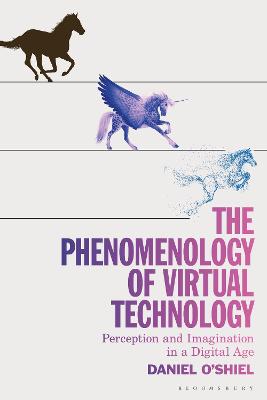 portes grátis
portes grátis
Phenomenology of Virtual Technology
Perception and Imagination in a Digital Age
O'Shiel, Daniel
Bloomsbury Publishing PLC
08/2022
264
Dura
Inglês
9781350245501
15 a 20 dias
Descrição não disponível.
Acknowledgements
List of Abbreviations
Introduction
PART I. PERCEPTION, IMAGE AND THE CHALLENGE OF VIRTUALITY
1. Husserl
1.1. Husserl's Perception
1.2. Presentation, Presentification and Phantasy
1.3. The Problem of Image-Consciousness
2. Fink
2.1. Fink's 'Presentification and Image'
2.2. Presentation, Depresentation and the Types of Presentification
2.3. Image-Consciousness, Again
3. Sartre
3.1. Perception and the Imaginary
3.1.1. Experiencing and Evoking Absence: Perception, Imagination and the Analogon
3.1.2. Sartre's Imaginary: Between Perception and Concept
3.1.3. An Ambiguity in Sartre's Conclusion?
3.2. Sartre's Answer for Image-Consciousness ..
3.3. Recapitulation and Discussion
4. The Challenge of Virtuality
4.1. Heidegger and Our Forked Being
4.2. Bergson and Deleuze
4.3. Perception and Image: a Difference in Kind or Degree?
4.4. Real Virtualities: Self, World, Others and Values
PART II. IRREAL VIRTUALITY: THE CASE OF VIRTUAL TECHNOLOGY
5. Social Media
5.1. The Significance and Influence of Social Media
5.2. Changed Selves, Worlds, Others and Values in Social Media
5.3. Breeur's Challenge: A Possibility for Real Engagement On or Through Social Media?
6. Online Gaming
6.1. Games Are Not (Straightforward) Perceptions
6.2. The Online Gaming Experience
6.3. Changed Selves, Worlds, Others and Values in Games
6.4. Reality, Irreality, Superreality and Addiction
7. VR, AR and MR Technologies
7.1. A Summary of VR, AR and MR Technologies
7.2. Changed Selves, Worlds, Others and Values in VR, AR and MR Technologies
7.3. 'Pure' MR and the Case of Holograms
8. Considerations and Consequences
8.1. Virtual Technology: Its Current Status and Scope
8.2. Blurrings, Inversions and Collapses? Current Trends and Future Possibilities
Conclusion
Bibliography
Index
List of Abbreviations
Introduction
PART I. PERCEPTION, IMAGE AND THE CHALLENGE OF VIRTUALITY
1. Husserl
1.1. Husserl's Perception
1.2. Presentation, Presentification and Phantasy
1.3. The Problem of Image-Consciousness
2. Fink
2.1. Fink's 'Presentification and Image'
2.2. Presentation, Depresentation and the Types of Presentification
2.3. Image-Consciousness, Again
3. Sartre
3.1. Perception and the Imaginary
3.1.1. Experiencing and Evoking Absence: Perception, Imagination and the Analogon
3.1.2. Sartre's Imaginary: Between Perception and Concept
3.1.3. An Ambiguity in Sartre's Conclusion?
3.2. Sartre's Answer for Image-Consciousness ..
3.3. Recapitulation and Discussion
4. The Challenge of Virtuality
4.1. Heidegger and Our Forked Being
4.2. Bergson and Deleuze
4.3. Perception and Image: a Difference in Kind or Degree?
4.4. Real Virtualities: Self, World, Others and Values
PART II. IRREAL VIRTUALITY: THE CASE OF VIRTUAL TECHNOLOGY
5. Social Media
5.1. The Significance and Influence of Social Media
5.2. Changed Selves, Worlds, Others and Values in Social Media
5.3. Breeur's Challenge: A Possibility for Real Engagement On or Through Social Media?
6. Online Gaming
6.1. Games Are Not (Straightforward) Perceptions
6.2. The Online Gaming Experience
6.3. Changed Selves, Worlds, Others and Values in Games
6.4. Reality, Irreality, Superreality and Addiction
7. VR, AR and MR Technologies
7.1. A Summary of VR, AR and MR Technologies
7.2. Changed Selves, Worlds, Others and Values in VR, AR and MR Technologies
7.3. 'Pure' MR and the Case of Holograms
8. Considerations and Consequences
8.1. Virtual Technology: Its Current Status and Scope
8.2. Blurrings, Inversions and Collapses? Current Trends and Future Possibilities
Conclusion
Bibliography
Index
Este título pertence ao(s) assunto(s) indicados(s). Para ver outros títulos clique no assunto desejado.
Acknowledgements
List of Abbreviations
Introduction
PART I. PERCEPTION, IMAGE AND THE CHALLENGE OF VIRTUALITY
1. Husserl
1.1. Husserl's Perception
1.2. Presentation, Presentification and Phantasy
1.3. The Problem of Image-Consciousness
2. Fink
2.1. Fink's 'Presentification and Image'
2.2. Presentation, Depresentation and the Types of Presentification
2.3. Image-Consciousness, Again
3. Sartre
3.1. Perception and the Imaginary
3.1.1. Experiencing and Evoking Absence: Perception, Imagination and the Analogon
3.1.2. Sartre's Imaginary: Between Perception and Concept
3.1.3. An Ambiguity in Sartre's Conclusion?
3.2. Sartre's Answer for Image-Consciousness ..
3.3. Recapitulation and Discussion
4. The Challenge of Virtuality
4.1. Heidegger and Our Forked Being
4.2. Bergson and Deleuze
4.3. Perception and Image: a Difference in Kind or Degree?
4.4. Real Virtualities: Self, World, Others and Values
PART II. IRREAL VIRTUALITY: THE CASE OF VIRTUAL TECHNOLOGY
5. Social Media
5.1. The Significance and Influence of Social Media
5.2. Changed Selves, Worlds, Others and Values in Social Media
5.3. Breeur's Challenge: A Possibility for Real Engagement On or Through Social Media?
6. Online Gaming
6.1. Games Are Not (Straightforward) Perceptions
6.2. The Online Gaming Experience
6.3. Changed Selves, Worlds, Others and Values in Games
6.4. Reality, Irreality, Superreality and Addiction
7. VR, AR and MR Technologies
7.1. A Summary of VR, AR and MR Technologies
7.2. Changed Selves, Worlds, Others and Values in VR, AR and MR Technologies
7.3. 'Pure' MR and the Case of Holograms
8. Considerations and Consequences
8.1. Virtual Technology: Its Current Status and Scope
8.2. Blurrings, Inversions and Collapses? Current Trends and Future Possibilities
Conclusion
Bibliography
Index
List of Abbreviations
Introduction
PART I. PERCEPTION, IMAGE AND THE CHALLENGE OF VIRTUALITY
1. Husserl
1.1. Husserl's Perception
1.2. Presentation, Presentification and Phantasy
1.3. The Problem of Image-Consciousness
2. Fink
2.1. Fink's 'Presentification and Image'
2.2. Presentation, Depresentation and the Types of Presentification
2.3. Image-Consciousness, Again
3. Sartre
3.1. Perception and the Imaginary
3.1.1. Experiencing and Evoking Absence: Perception, Imagination and the Analogon
3.1.2. Sartre's Imaginary: Between Perception and Concept
3.1.3. An Ambiguity in Sartre's Conclusion?
3.2. Sartre's Answer for Image-Consciousness ..
3.3. Recapitulation and Discussion
4. The Challenge of Virtuality
4.1. Heidegger and Our Forked Being
4.2. Bergson and Deleuze
4.3. Perception and Image: a Difference in Kind or Degree?
4.4. Real Virtualities: Self, World, Others and Values
PART II. IRREAL VIRTUALITY: THE CASE OF VIRTUAL TECHNOLOGY
5. Social Media
5.1. The Significance and Influence of Social Media
5.2. Changed Selves, Worlds, Others and Values in Social Media
5.3. Breeur's Challenge: A Possibility for Real Engagement On or Through Social Media?
6. Online Gaming
6.1. Games Are Not (Straightforward) Perceptions
6.2. The Online Gaming Experience
6.3. Changed Selves, Worlds, Others and Values in Games
6.4. Reality, Irreality, Superreality and Addiction
7. VR, AR and MR Technologies
7.1. A Summary of VR, AR and MR Technologies
7.2. Changed Selves, Worlds, Others and Values in VR, AR and MR Technologies
7.3. 'Pure' MR and the Case of Holograms
8. Considerations and Consequences
8.1. Virtual Technology: Its Current Status and Scope
8.2. Blurrings, Inversions and Collapses? Current Trends and Future Possibilities
Conclusion
Bibliography
Index
Este título pertence ao(s) assunto(s) indicados(s). Para ver outros títulos clique no assunto desejado.


